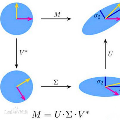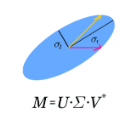Matrix factorizations in dual number algebra, a hypercomplex system, have been applied to kinematics, mechanisms, and other fields recently. We develop an approach to identify spatiotemporal patterns in the brain such as traveling waves using the singular value decomposition of dual matrices in this paper. Theoretically, we propose the compact dual singular value decomposition (CDSVD) of dual complex matrices with explicit expressions as well as a necessary and sufficient condition for its existence. Furthermore, based on the CDSVD, we report on the optimal solution to the best rank-$k$ approximation under a newly defined quasi-metric in the dual complex number system. The CDSVD is also related to the dual Moore-Penrose generalized inverse. Numerically, comparisons with other available algorithms are conducted, which indicate less computational costs of our proposed CDSVD. In addition, the infinitesimal part of the CDSVD can identify the true rank of the original matrix from the noise-added matrix, but the classical SVD cannot. Next, we employ experiments on simulated time-series data and a road monitoring video to demonstrate the beneficial effect of the infinitesimal parts of dual matrices in spatiotemporal pattern identification. Finally, we apply this approach to the large-scale brain fMRI data, identify three kinds of traveling waves, and further validate the consistency between our analytical results and the current knowledge of cerebral cortex function.
翻译:暂无翻译




